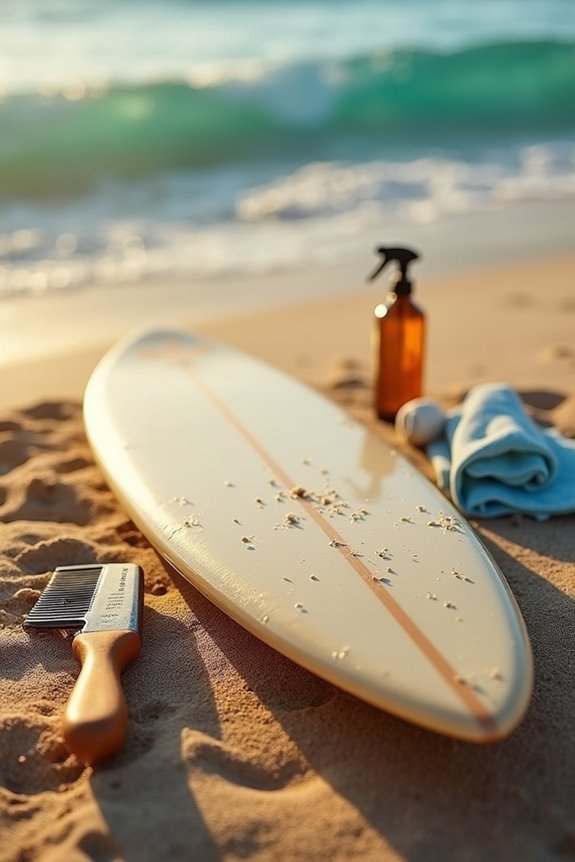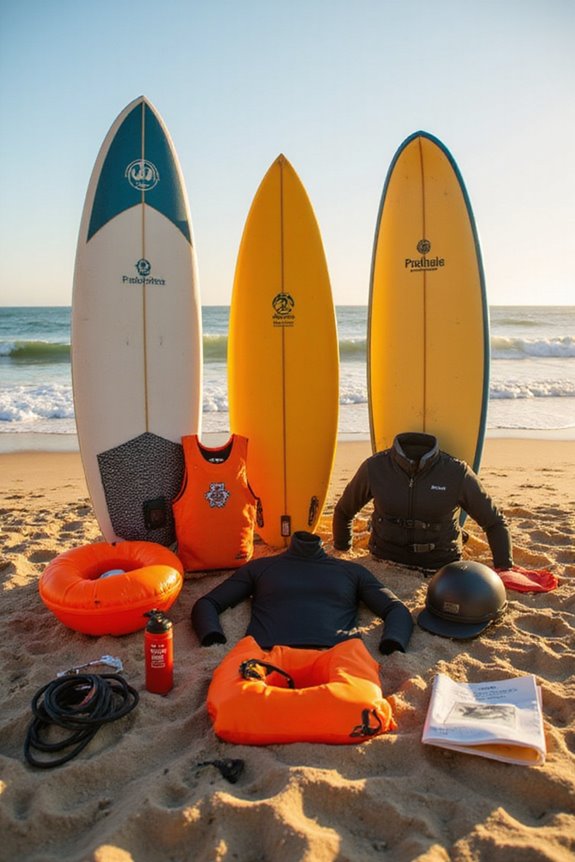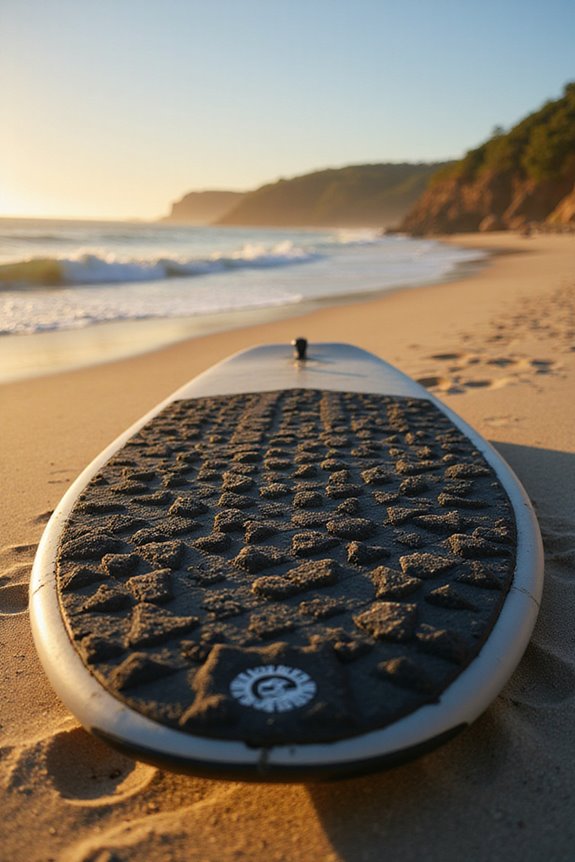To remove surf wax, we need effective tools like a plastic or metal wax scraper, and specialty wax removers. Start by softening the wax using sunlight or a low-setting hair dryer. We should use long, smooth strokes at a 45-degree angle to scrape the wax without damaging the board. After scraping, we can clean residual wax with flour or a commercial remover. Next, we can apply a new layer of wax for best grip, and further tips await.
Key Takeaways
- Soften the wax using sunlight, a low-setting hair dryer, or warm water before scraping.
- Use a dedicated wax comb at a 45-degree angle for effective scraping.
- Collect wax debris in a clean area; use a cloth to catch flakes for easier removal.
- Apply a commercial wax remover or natural oils to clean any remaining residue thoroughly.
- Choose eco-friendly wax alternatives and dispose of scrapings responsibly to protect the environment.
Essential Tools for Wax Removal
When we set out to remove surf wax, having the right tools can make the process smoother and more efficient. First, let’s consider the wax scraper types. We can choose between plastic scrapers, which are lightweight and flexible, or metal scrapers, which are effective but require caution to avoid damaging our boards.
Additionally, multi-functional scrapers can handle stickers and other residues.
Next, we should look into wax removal products. Specialty chemical removers, like Sticky Bumps Wax Remover, can effectively dissolve wax. However, we must ascertain they are safe for our boards. Using high-performance waxes designed for specific conditions can also make removal easier and enhance grip.
Finally, accessories such as replacement blades and ergonomic designs can enhance our scraping experience, reducing fatigue and improving grip during the task.
Techniques for Effective Wax Scraping
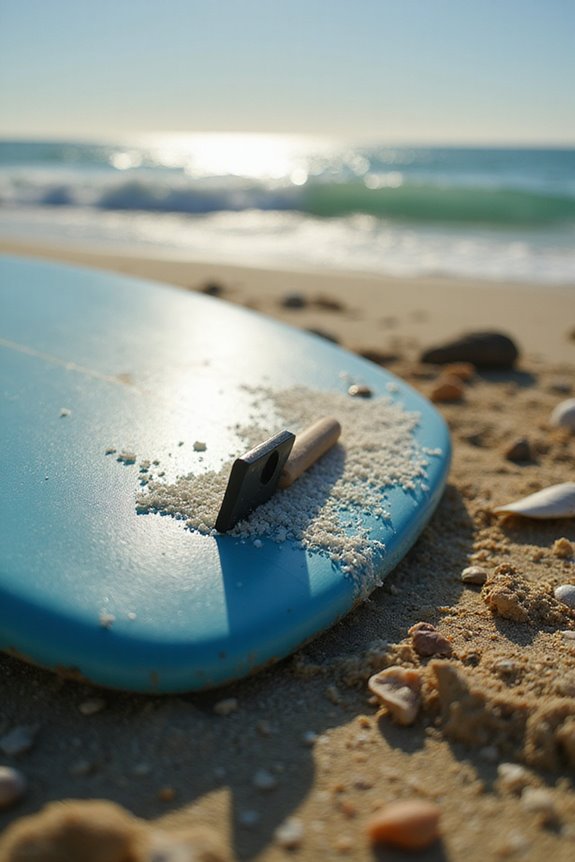
To effectively remove surf wax, we should start by softening the wax, making the scraping process easier. We can expose our board to the sun for 5–15 minutes, use a low-setting hair dryer, or warm it with water. A dedicated wax comb is essential; we should hold it at a 45-degree angle and use long, smooth strokes from the nose to the tail.
When employing these scraping techniques, we should apply steady pressure without gouging the board. For thick wax layering, multiple passes may be necessary. To keep our work area clean, we can collect wax debris at one point and use a cloth to catch flakes. This method guarantees efficient removal and minimizes mess. Additionally, using a wax removal technique can help maintain the integrity of your board’s eco-friendly materials, ensuring a longer lifespan.
Cleaning Residual Wax and Board Surface
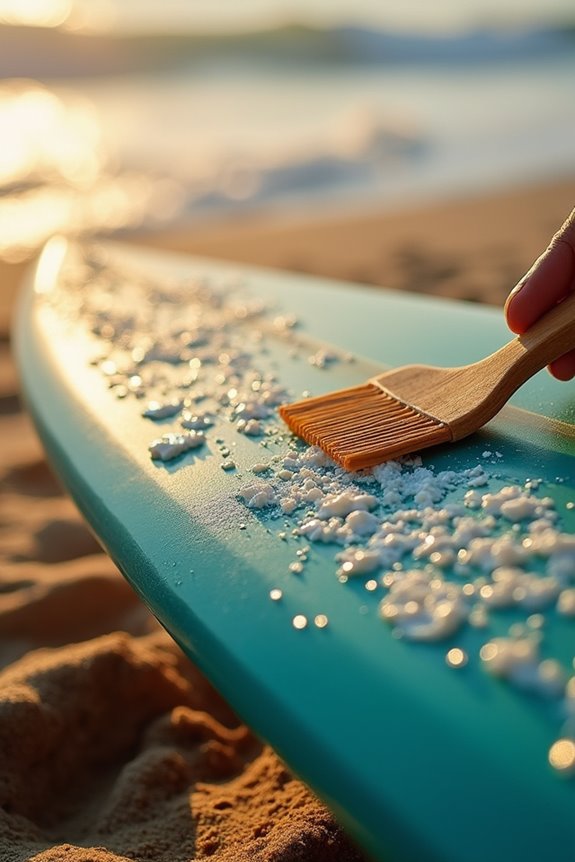
Cleaning residual wax from our surfboard is essential for maintaining peak performance and prolonging the life of the board. To effectively remove wax, we can start by softening it using heat. Sunlight for 10-20 minutes works well, or we can use a hairdryer or warm water if the sun isn’t available.
After scraping, we should sprinkle flour over the area to absorb any remaining wax. Rubbing this mixture with a cloth helps break down the residue.
Finally, using a commercial wax remover or natural oils allows us to clean and polish the surface, enhancing board hygiene. Regular buffing and cleaning guarantee our surfboard remains in top condition, ready for the next session. Using oil-based removers is particularly effective for soft wax, ensuring a thorough clean.
Environmental and Safety Considerations
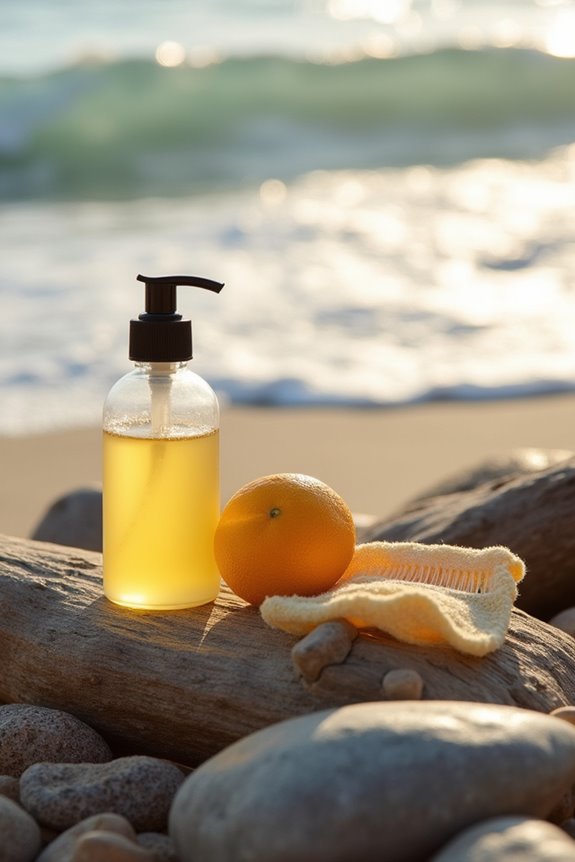
After we’ve removed residual wax from our surfboards, it’s important to contemplate the environmental and safety aspects associated with surf wax use and disposal. Many traditional surf waxes contain harmful petrochemicals, including carcinogens like benzene and toluene. These substances pose risks not only to our health but also contribute to significant environmental impact, such as air and water pollution.
To minimize toxicity, we should follow safety precautions when handling surf wax. This includes wearing gloves and using proper disposal methods for wax scrapings. Choosing eco-friendly alternatives made from natural ingredients can reduce our ecological footprint. By making informed decisions, we can help protect marine ecosystems and promote sustainability in our surfing practices. For example, opting for biodegradable options ensures that we are less harmful to the environment while still enjoying our surfing activities.
Tips for Reapplying Wax After Removal
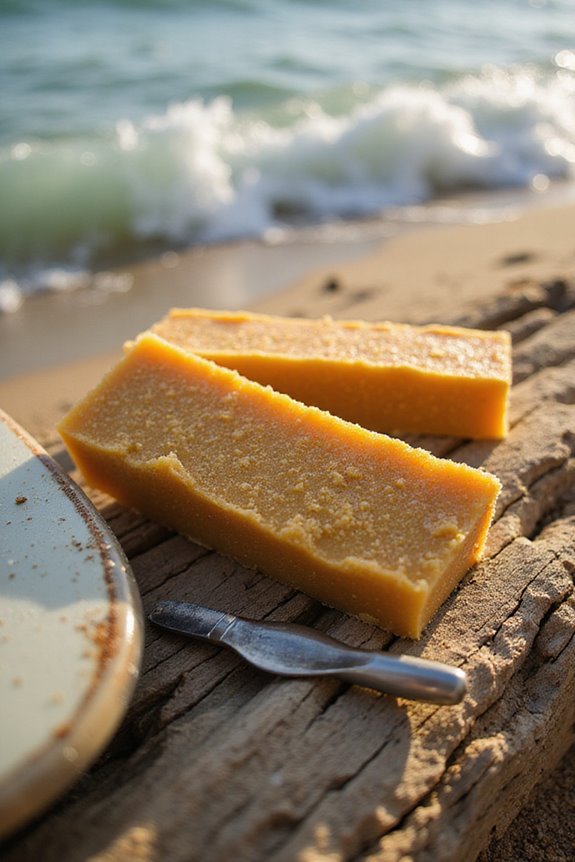
When we’re ready to reapply wax after removal, preparation is key to achieving ideal grip on our surfboards. First, we should choose a base coat or extra hard wax to create a durable foundation layer. Then, select a top coat wax suited for the current water temperature for maximum grip. Additionally, using Sticky Bumps for the top coat can enhance performance, especially in cooler water temperatures. As we think about reapplication frequency, it’s important to regularly check our wax condition and reapply when grip diminishes. To guarantee effective wax layering, we must apply light pressure in small circles or criss-cross patterns, building texture gradually. Finally, we should always store our wax in a cool, dry place to maintain its quality and ease of use for future sessions.
Frequently Asked Questions
How Often Should I Replace My Surf Wax?
We should replace our surf wax every 3 to 5 sessions, depending on surfboard maintenance and wax types. Visual cues like smoothness or flaking can guide us on when it’s time for a fresh application.
Can I Use Regular Household Items for Wax Removal?
Did you know 60% of surfers use household alternatives for wax removal? We can easily follow some effective wax removal tips using items like flour or cornmeal, making the process simple and eco-friendly while keeping our boards in great shape.
What Should I Do if Wax Is Stuck in Crevices?
If we find wax stuck in crevices, we can use wax removal techniques like gentle scraping and heating. Proper surfboard maintenance guarantees we keep our gear in top shape while effectively removing stubborn wax.
Is It Safe to Remove Wax in Cold Weather?
Removing wax in cold weather can be like trying to sculpt ice—challenging but doable. We just need to apply gentle heat, use the right tools, and proceed carefully to guarantee safe wax removal without damaging our board.
Can I Melt Wax for Easier Removal?
Yes, we can use melting techniques to ease wax removal. By applying heat, wax softens, making it easier to scrape. Additionally, exploring wax alternatives may help us avoid stubborn residues in the future.

